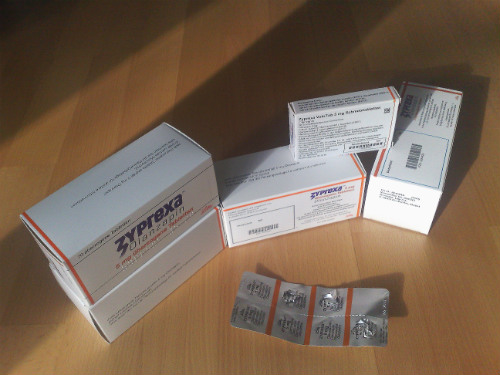- All patients received highly emetogenic chemotherapy.
- Olanzapine in conjunction with other antiemetics was highly effective in reducing both nausea and vomiting in these patients.
- Olanzapine administration significantly improved patients quality of life and Functional Living Index-Emesis questionnaire scores.
Two recent studies show that olanzapine [Zyprexa, Lilly] is significantly effective in the prevention of chemotherapy-induced nausea and vomiting (CINV). The drug was effective even in patients who received highly emetogenic chemotherapy. The studies were published in The New England Journal of Medicine (NEJM) and the Journal of Pain and Symptom Management (JPSM).

Brygos Painter, 500–470 BC.
(Sources: Wikipedia/Stefano Bolognini - Own work/Creative Commons.)
The New England Journal of Medicine
“Olanzapine, as compared with placebo, significantly improved nausea prevention, as well as the complete-response rate, among previously untreated patients who were receiving highly emetogenic chemotherapy,” concluded the authors of the study published in NEJM. The study was funded by the National Cancer Institute (ClinicalTrials.gov number, NCT02116530.).
The study, “Olanzapine for the Prevention of Chemotherapy-Induced Nausea and Vomiting,” was a randomized, double-blind, placebo controlled, phase 3 trial. Olanzapine was administered in combination with dexamethasone, aprepitant or fosaprepitant, and a 5-hydroxytryptamine type 3-receptor antagonist. All patients in the treatment group had no previous chemotherapy and were treated with cisplatin (≥70mg per square meter of body-surface area) or cyclophosphamide-doxorubicin.
“The doses of the 3 concomitant drugs administered before and after chemotherapy were similar in the 2 groups. The 2 groups received either 10mg of olanzapine orally or matching placebo daily on days 1 through 4. Nausea prevention was the primary end point; a complete response (no emesis and no use of rescue medication) was a secondary end point,” the authors explained.
“In the analysis, we included 380 patients who could be evaluated (192 assigned to olanzapine, and 188 to placebo). The proportion of patients with no chemotherapy-induced nausea was significantly greater with olanzapine than with placebo in the first 24 hours after chemotherapy (74% vs. 45%, P=0.002), the period from 25 to 120 hours after chemotherapy (42% vs. 25%, P=0.002), and the overall 120-hour period (37% vs. 22%, P=0.002).
“The complete-response rate was also significantly increased with olanzapine during the 3 periods: 86% versus 65% (P<0.001), 67% versus 52% (P=0.007), and 64% versus 41% (P<0.001), respectively. Although there were no grade-5 toxic effects, some patients receiving olanzapine had increased sedation (severe in 5%) on day 2.”

Sources: Wikipedia/By Speakers/GNU Free/Creative Commons.)
Journal of Pain and Symptom Management
“The addition of 5mg/day of oral olanzapine to standard therapy can reduce the frequency of CINV and improve QOL of patients receiving highly or moderately emetogenic chemotherapy,” concluded the authors of this randomized, double-blind, placebo-controlled study.
CINV can significantly and negatively affect the quality of life (QOL) of patients being treated for cancer with chemotherapeutic agents. Psychotropic drugs, including olanzapine, can have a strong antiemetic effect and may ameliorate this severely unpleasant side effect of treatment. The researchers in this study sought to determine whether olanzapine could reduce the frequency of CINV and improve patients' QOL during chemotherapy.
The trial included 44 patients who were due to receive highly or moderately emetogenic chemotherapy. “All patients received a 5-hydroxytryptamine3 receptor antagonist, steroid, and neurokinin-1 receptor antagonist. Patients were randomly assigned to take 5 mg/day of oral olanzapine (OL group, n=22) or placebo (control group, n=22) daily from the day before chemotherapy (Day 0) to Day 5. The primary endpoint was the rate of patients who achieved total control (no vomiting, no use of rescue medications, and maximum nausea of <5/100mm on a visual analogue scale). The secondary endpoint was Functional Living Index-Emesis questionnaire score on Days 0 and 6.
“The rate of patients achieving total control was significantly higher in the OL group (86% and 64% in acute and delayed phases, respectively) than in the control group (55% and 23%, P=0.045, P=0.014, respectively). Furthermore, the OL group experienced a better QOL than the control group, as reported on the Functional Living Index-Emesis questionnaire (P=0.0004).”
